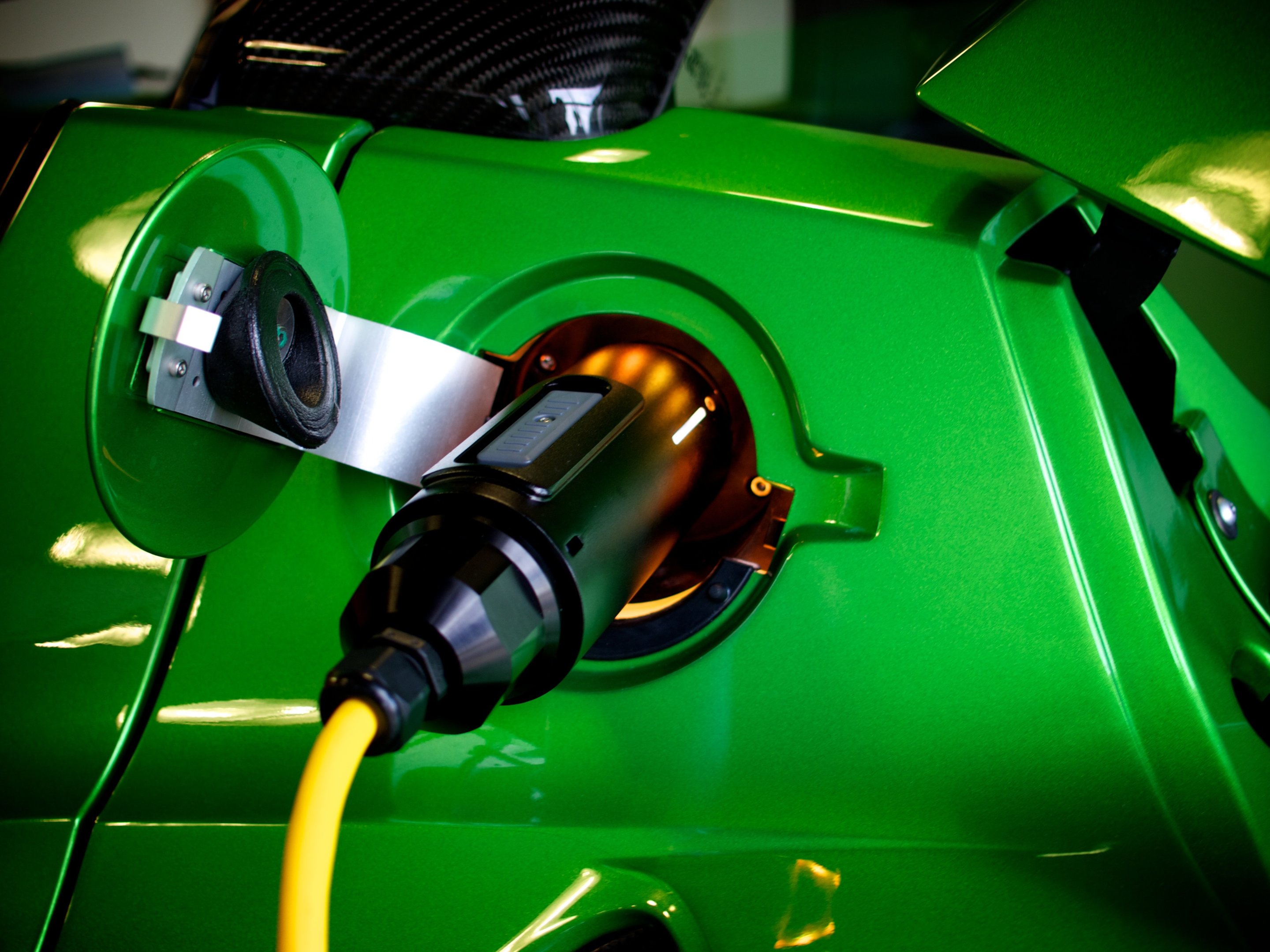The Auto Industry's Growing Revolt Against Electric Vehicle Mandates

Table of Contents
Economic Concerns Fueling the Revolt
The economic burden of complying with EV mandates is a primary driver of the auto industry's revolt. The transition to electric vehicles requires massive upfront investments, creating significant financial strain, particularly for smaller manufacturers.
High Production Costs
Producing EVs is considerably more expensive than manufacturing internal combustion engine (ICE) vehicles. This cost differential stems from several factors:
- Increased R&D costs: Developing EV technology, including battery systems, electric motors, and power electronics, requires substantial research and development investments.
- Expensive battery raw materials: The cost of lithium, cobalt, nickel, and other raw materials crucial for EV batteries is volatile and often high. This price fluctuation creates significant uncertainty for manufacturers.
- Factory upgrades needed: Automakers need to invest heavily in upgrading their existing manufacturing facilities or building entirely new ones to accommodate EV production lines.
For example, several smaller European automakers are struggling to meet the EU's ambitious EV targets due to the high cost of transitioning their production lines. The economic pressure is forcing some to consider mergers or even bankruptcy.
Supply Chain Disruptions
The EV supply chain is notoriously vulnerable, with significant reliance on specific geographical regions for critical components. This creates bottlenecks and disruptions that exacerbate production costs and delays.
- Battery material scarcity: The demand for battery raw materials far outpaces the current supply, leading to price increases and shortages.
- Chip shortages: The ongoing global chip shortage continues to hamper EV production, as semiconductor chips are essential for various EV components.
- Reliance on specific geographical regions for resources: The concentration of battery material production and processing in a few countries creates vulnerabilities to geopolitical instability and trade disruptions.
The recent disruptions in the supply of lithium from South America highlight the fragility of the EV supply chain and the impact on production timelines and costs.
Impact on Smaller Automakers
The financial strain imposed by EV mandates disproportionately impacts smaller automakers. They lack the economies of scale and financial resources of larger corporations to invest in the necessary technology and infrastructure.
- Financial strain: Smaller companies struggle to secure the significant funding required for EV development and production.
- Inability to compete: The high cost of EV production puts smaller automakers at a significant competitive disadvantage against larger corporations.
- Potential for market consolidation: The challenges of transitioning to EVs could lead to increased market consolidation, with smaller players being absorbed by or forced out of the market.
Many smaller automakers are openly expressing concerns that the current EV mandate policies will force them out of business.
Technological Hurdles and Consumer Demand
Beyond the economic challenges, technological limitations and consumer preferences are also fueling the auto industry's resistance to aggressive EV mandates.
Battery Technology Limitations
Current battery technology presents several limitations that hinder widespread EV adoption:
- Need for improved battery technology: Higher energy density batteries are crucial for extending EV driving range and reducing charging times.
- Faster charging infrastructure: The development of faster and more reliable charging infrastructure is critical to address range anxiety.
- Longer battery life: Improved battery lifespan is essential to reduce the overall cost of ownership for EVs.
Concerns about battery lifespan and the environmental impact of battery production and disposal remain significant obstacles to overcome.
Insufficient Charging Infrastructure
The lack of adequate charging infrastructure, especially outside of urban areas, is a major impediment to EV adoption.
- Limited public charging stations: The number of public charging stations remains insufficient to meet the growing demand for EVs.
- Uneven distribution of charging points: Charging infrastructure is often concentrated in urban areas, leaving rural regions underserved.
- Charging speed limitations: The relatively slow charging speeds of many public charging stations further contribute to range anxiety.
The uneven distribution of charging infrastructure is a particularly significant challenge in developing countries, hindering the potential for mass EV adoption.
Consumer Preferences and Market Readiness
Consumer preferences and market readiness also play a crucial role in the industry’s resistance. Many consumers remain hesitant to switch to EVs due to several factors:
- Price sensitivity: The higher purchase price of EVs compared to ICE vehicles is a significant barrier to entry for many consumers.
- Range anxiety: Concerns about limited driving range and the availability of charging stations remain a major obstacle.
- Limited model choices: The range of EV models available is still limited compared to the variety of ICE vehicles.
- Lack of consumer awareness: Many consumers lack sufficient awareness of the benefits and drawbacks of EVs.
Market research consistently shows that price and range anxiety are the top two reasons consumers hesitate to buy EVs.
The Political and Regulatory Landscape
The political and regulatory environment surrounding EV mandates is complex and contributes significantly to the industry's concerns.
Varying Government Policies
EV mandates vary considerably across different countries and regions, creating uncertainty and challenges for global automakers.
- Differing timelines: Different countries have set vastly different timelines for achieving their EV adoption targets.
- Varying levels of financial incentives: The level of financial support provided to EV buyers and manufacturers varies significantly across regions.
- Contrasting regulatory frameworks: The regulatory frameworks governing EV standards and emissions differ significantly across countries.
This lack of harmonization in government policies makes it difficult for automakers to plan and execute a global EV strategy.
Lobbying Efforts and Industry Pushback
The auto industry is actively lobbying to influence EV mandate policies, arguing for more realistic timelines and greater flexibility.
- Industry associations: Major automotive industry associations are actively involved in lobbying efforts to shape EV policies.
- Political donations: The auto industry contributes significantly to political campaigns, seeking to influence policymakers.
- Public relations campaigns: Automakers are engaging in public relations campaigns to shape public opinion on EV mandates.
These lobbying efforts reflect the industry's determination to influence the pace and nature of the transition to electric vehicles.
Legal Challenges to EV Mandates
Several legal challenges are being mounted against EV mandates, arguing that they are economically unfeasible, technologically premature, or represent government overreach.
- Arguments against government overreach: Legal challenges argue that government mandates infringe on the freedom of automakers to choose their production strategies.
- Claims of economic hardship: Lawsuits contend that aggressive EV mandates could lead to significant economic hardship for automakers and related industries.
- Challenges based on technological feasibility: Legal actions question the technological feasibility of achieving the ambitious EV targets set by governments.
These legal battles highlight the deep divisions surrounding EV mandates and the ongoing uncertainty surrounding the future of the automotive industry.
Conclusion: The Future of Electric Vehicles and the Ongoing Debate Over Mandates
The auto industry's revolt against electric vehicle mandates is driven by a complex interplay of economic, technological, and political factors. The high cost of EV production, supply chain vulnerabilities, technological limitations of current battery technology, insufficient charging infrastructure, and varying government policies create significant challenges for automakers, particularly smaller manufacturers. The industry's lobbying efforts and legal challenges reflect the deep concerns about the pace and feasibility of the transition to EVs. Finding a sustainable path forward requires a nuanced discussion – one that avoids the pitfalls of overly stringent electric vehicle mandates and promotes responsible technological advancement, ensuring a fair and competitive market for all players. We need a balanced approach that prioritizes innovation while acknowledging the legitimate concerns of the auto industry to ensure a smooth and sustainable transition to a cleaner transportation future.

Featured Posts
-
 Nine Home Runs Yankees Historic Night In 2025 Season
Apr 23, 2025
Nine Home Runs Yankees Historic Night In 2025 Season
Apr 23, 2025 -
 Usa Today Analyse Des Depenses De Defense Accrues Entre Les Usa Et La Russie
Apr 23, 2025
Usa Today Analyse Des Depenses De Defense Accrues Entre Les Usa Et La Russie
Apr 23, 2025 -
 La Carte Blanche De Marc Fiorentino Impact Et Influence
Apr 23, 2025
La Carte Blanche De Marc Fiorentino Impact Et Influence
Apr 23, 2025 -
 Blagdansko Radno Vrijeme Trgovina Uskrs I Uskrsni Ponedjeljak
Apr 23, 2025
Blagdansko Radno Vrijeme Trgovina Uskrs I Uskrsni Ponedjeljak
Apr 23, 2025 -
 Brewers Achieve Historic Victory Over Athletics
Apr 23, 2025
Brewers Achieve Historic Victory Over Athletics
Apr 23, 2025
